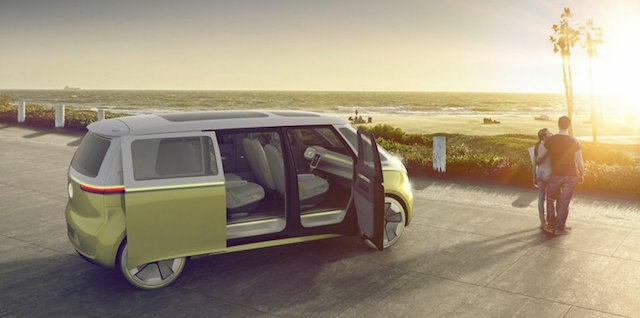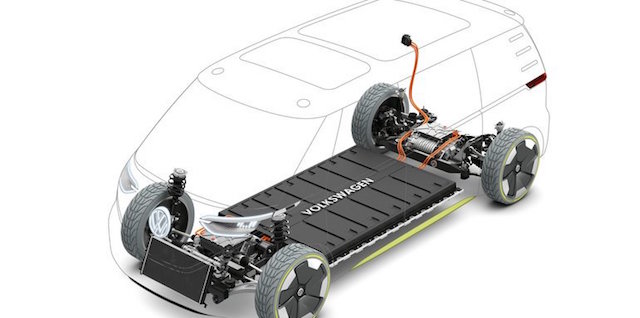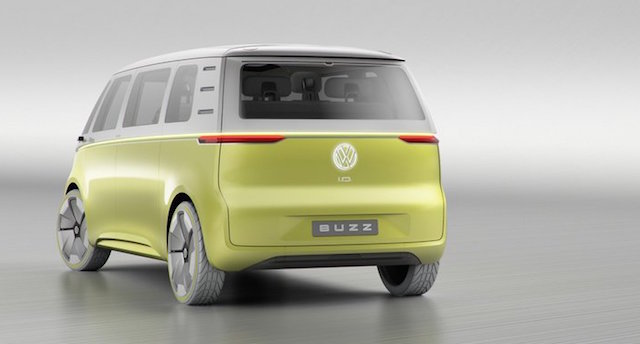
Volkswagen has been talking for years about building a modern version of its Kombi van and now the dithering is over – the ID Buzz concept is headed to production.
VW brand chief Herbert Diess has confirmed as much, telling Britain’s AutoExpress magazine that it will build a Kombi-style vehicle as part of its ‘ID’ range of electric vehicles. It will contain design cues from the classic Type1 and Type2 Kombi, aka Microbus.
Diess told reporters at the European launch of the new VW Polo hatchback: “Emotional cars are very important for the brand. We are selling loads of Beetles still, particularly in US markets. But we will also have the Microbus, which we have recently decided we will build.”
The ID Buzz concept was first unveiled at the Detroit motor show last January. In March, at the Geneva show, VW design chief Oliver Stefani told reporters: “We would like to bring this back because it fits so well to what the brand stands for: it’s emotional, it has functionality, it makes your life easier.”
The production version of the ID Buzz will be underpinned by an extended version of VW’s new MEB modular electric platform, with a 3.3metre wheelbase, short overhangs and boxy shape designed to maximise space.
“With the MEB platform this is the chance now to get the proportions back,” Stefani added, meaning that an EV doesn’t need to have an engine in the front. “But you can also get much more interior space, almost one class higher.”
The ID Buzz clearly draws inspiration from the classic and iconic Type 2 Microbus, which was launched in 1950. Its 2017 interpretation includes retro design cues such as the two-tone paint job, blunt front end and large VW badge. But the spaceage interior, huge 22-inch wheels and wraparound LED lights modernise the design.
That allows the ID Buzz to offer a flexible eight-seat cabin, with a lounge-style layout, multi-adjustable rear chairs and a driver’s seat that swivels 180 degrees.
This happens automatically when the autonomous ID Pilot mode is selected, retracting the single-piece capacitive touch steering wheel while the car takes full control of the driving. Other tech includes an augmented reality head-up display and a removable portrait tablet that controls the car’s functions.
The ID Buzz’s architecture means the batteries and motors sit beneath the floor, allowing two luggage compartments front and rear. It’s all-wheel drive, with an electric motor on each axle and a combined system output of 275kW.
VW claims a 0-100km/h time of five seconds and a limited top speed of 160km/h. Claimed range is between 440 and 600km. It also features inductive charging tech, giving an 80 per cent boost in 30 minutes.
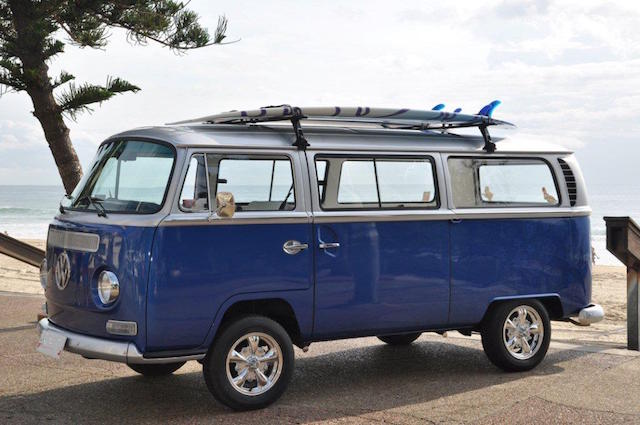
VW plans to launch a full range of autonomous EVs, aiming to sell one million MEB-based cars by 2025. “In 2020, the Volkswagen brand will launch a major new electric vehicle initiative with a completely new vehicle architecture,” said Diess.
“Then we will bring a whole new generation of fully networked, fully electric vehicles on to the market. By 2025, we want to sell one million electric cars per year. We make electromobility the new trademark of Volkswagen.”
It’s thought that the ID Buzz van will be the figurehead for VW’s upcoming Uber rival, MOIA – a ride-sharing company set to launch in 2020.
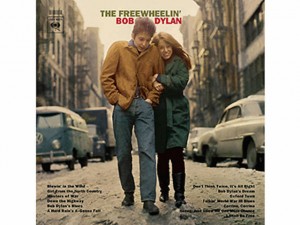 The original Kombi/Microbus had a huge cultural impact on the western world. It is said Steve Jobs sold his Type 2 to help kick-start Apple Computer. There were countless movie roles – including Little Miss Sunshine (2006), Field of Dreams (1989), Back to the Future (1985).
The original Kombi/Microbus had a huge cultural impact on the western world. It is said Steve Jobs sold his Type 2 to help kick-start Apple Computer. There were countless movie roles – including Little Miss Sunshine (2006), Field of Dreams (1989), Back to the Future (1985).
References in song included Arlo Guthrie’s Alice’s Restaurant (1967), Bruce Springsteen’s The Angel (1973), Men At Work’s Down Under (1982). And, of course, “eleven long-haired friends of Jesus in a chartreuse Microbus,” from C W McCall’s hit Convoy (1975). There was a blue Microbus on the cover of Bob Dylan’s 1963 album, The Freewheelin’.

